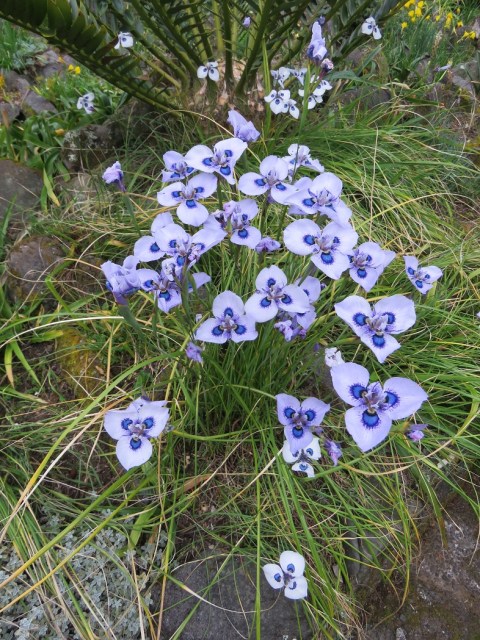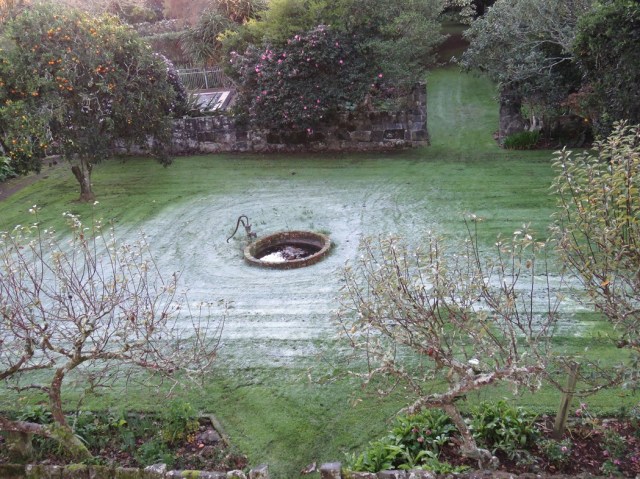
We had to drive to Wanganui and back on Tuesday morning – a five hour round trip. On the way down, we drove through snow (inland from here), sleet and hail as the first polar blast of winter hit. By the time we drove back the sun had appeared but with a biting cold wind that felt as if it had come straight off the ice caps of Antarctica. Wednesday dawned bright, clear, frosty and calm though cold and that has been the pattern in subsequent days – cold mornings and sunny days.
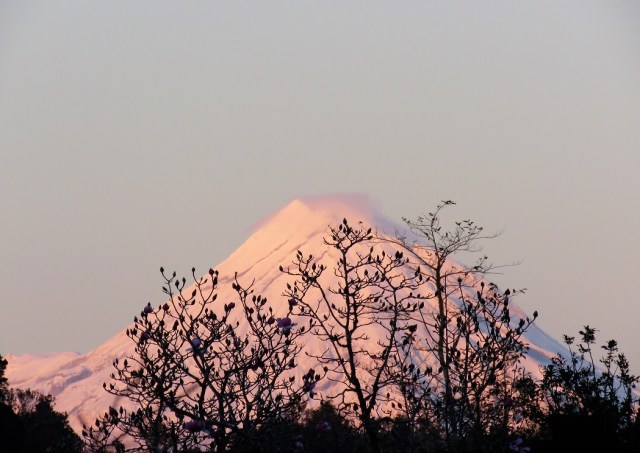
The magnolias are undeterred. Matariki[i] is underway and the plants agree that this is the time to celebrate the start of a new year. It will be another few weeks before the Magnolia campbellii in our park will be in full bloom but my annual pastime of photographing the magnolia and te mounga[ii] has started.
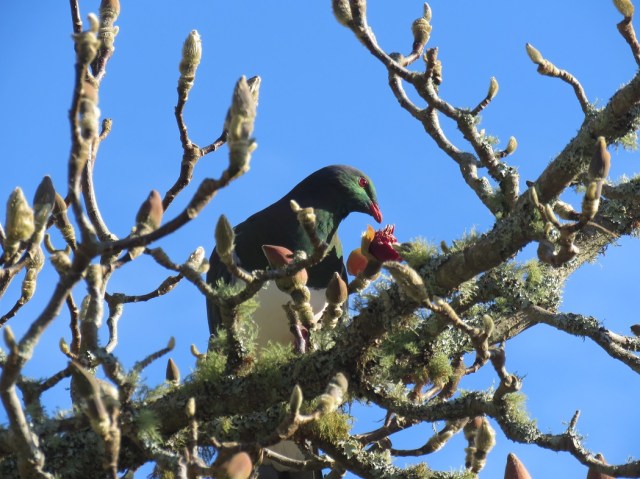
By 10am, it is warm enough for us to sit outside for morning coffee and this shameless – shameless, I tell you – kereru[iii] took up its position in a magnolia a few metres away, eating the petals of the first buds showing colour. It may have been its mate just down the driveway that was doing the same to the first buds on Magnolia Vulcan. We are more charmed than miffed. Soon the trees will open so many blooms that they will outpace the kereru. We would rather have resident kereru all year round than perfect first magnolia blooms. I am told kaka – our big native parrot – can do the same but we have not had a mob of kaka descend on us. A reader tells me she once watched them strip every bud off a magnolia. The only two kaka we have seen here arrived singly in different years and while Mark saw one of them pulling buds off Magnolia Iolanthe to hurl at the tui who were protesting its presence, it takes more than one to strip a tree. Rosella parrots – a showy Australian intruder – are also reputed to cause damage up north but we haven’t seen them doing it here and we do have them turn up in small groups.
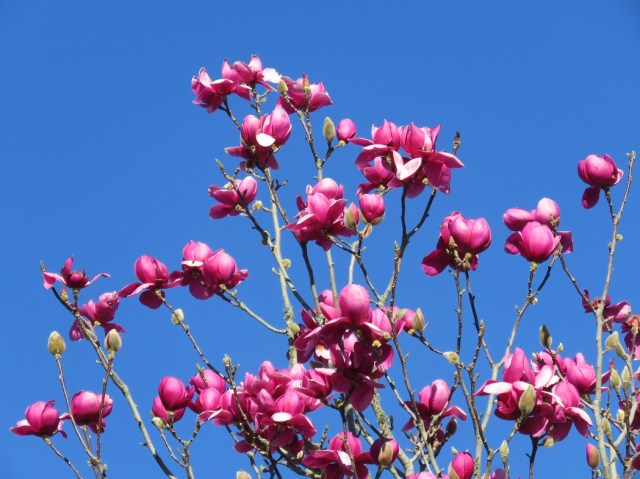
The only magnolias in full bloom so far are seedlings from the breeding programme that will never be released. We only ever name magnolias that are going into commercial production and these first ones are just too early, too vulnerable to winter’s icy blasts to put on the market. They exist solely to give us pleasure on our own property. Some of them are such good performers that an identifying reference name evolves. So it is with Hazel’s magnolia. We get asked for funeral flowers from time to time, or we offer to do informal casket arrangements for people we know. This magnolia formed the centrepiece of an arrangement for Hazel, the mother of a close friend of Mark’s and a dear lady who meant a great deal to him in his younger years.
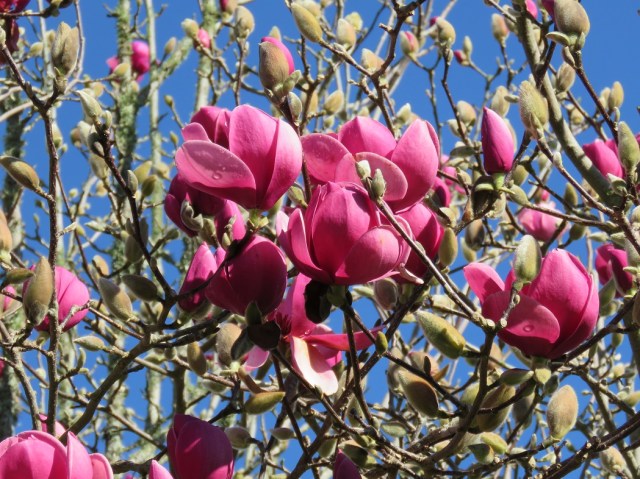

Hazel’s magnolia makes a pretty picture every year. It performs well and, we found, also holds well when cut. In the world of magnolias, it is not remarkable. There are prettier colours, more distinctive forms and it flowers way too early for most growing conditions. It just happens to be the first of the season for us, standing out in bloom where it is growing in the shelter belt that protects one of our open paddocks. Yesterday, it looked great from a distance. Close-up, it revealed two problems. The chewed blooms are almost certainly the result of kereru feeding on the sweet, young petals. The browning is frost damage and if it gets damaged in our mild climate, it will get destroyed in colder conditions.

We have long assumed that the chewing out of young buds which then open to distorted blooms can be attributed to the pesky possums that Mark wages war on all year round. We certainly could have done without the early settlers introducing the brushtail possum which is a noxious pest, optimistically slated for eradication in this country, though protected in its Australian homeland. Mark is now wondering whether it is a combination of rats and possums.

We know possums are guilty. Mark has shot enough of them in magnolia trees and the proof lies in an examination of their stomach contents. All that red? Those are magnolia buds. Rats are harder to prove because we never seen one in the act and we don’t have the corpses to perform a forensic analysis of stomach contents. But when all the buds failed on a plant of Honey Tulip last year and closer examination showed that every single bud had a neat incision in it, he thought it may be rat damage, not possums. We know possums eat out the centre of larger buds with colour already developed. It seems like the very small nips in the less well-developed buds are rats.
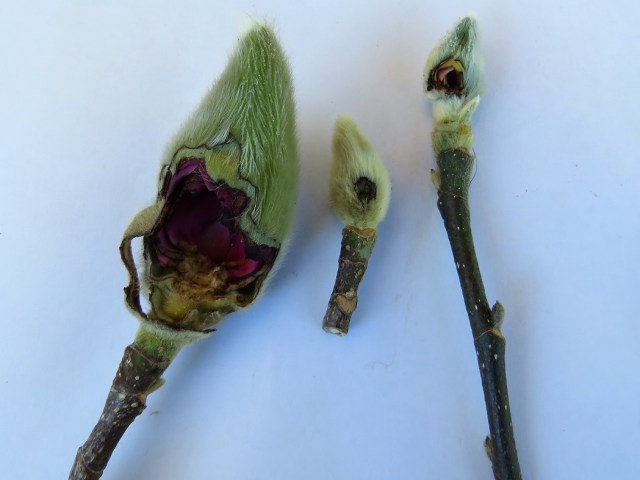
In the meantime, how many photos of the magnolia and te mounga do I need? I shall stop now until more blooms are open. But glory be, how I love big, beautiful magnolias against a blue sky or snow.


[i] Matariki – the Maori new year, determined by the rise of the Pleiades star formation.
[ii] Te mounga – the mountain in local dialect. In standardised Maori, mounga is more commonly seen as maunga. Otherwise known as Mount Taranaki.
[iii] Kereru – native wood pigeon. It is fully protected because its numbers are declining due to loss of habitat and its very slow rate of natural increase – most breeding pairs only raise a single chick each year.
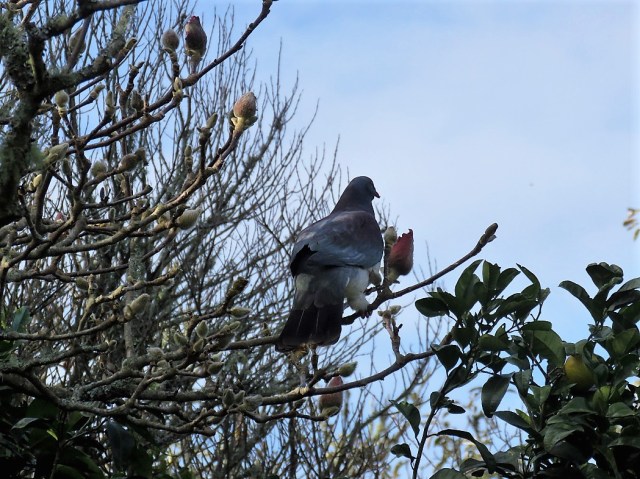
On another topic, rather than a postscript, those who read my May post about Mrs Wang’s garden (and there were many of you. I know this from my site stats) may enjoy this delightful and affirming update. I feel vindicated. Mrs Wang is indeed a first-generation New Zealander, she declares herself to be a digger and she did indeed experience the devastating famine in China during her childhood. I did not, I admit, pick her as a professional civil engineer. Those whose ugly response when the story broke was to defend the establishment by attempting to discredit Mrs Wang with vile speculation based entirely on their own prejudices, need to take a good hard look at their own racism. I am not referring to comments on my post – readers here are in a different league but I saw some pretty awful speculation and accusation coming through on other social media. There is much that is good in this world for those who choose to see it.



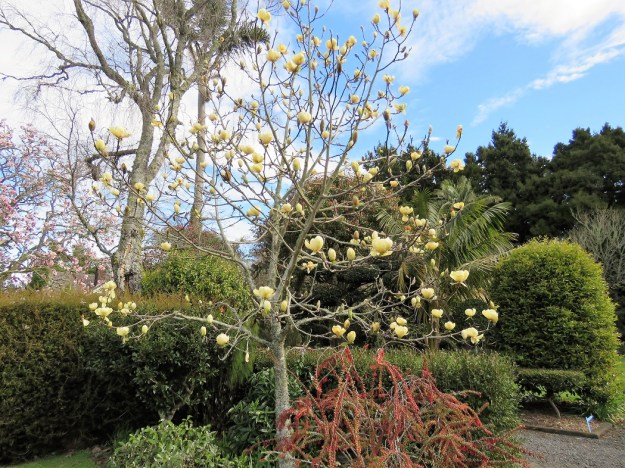




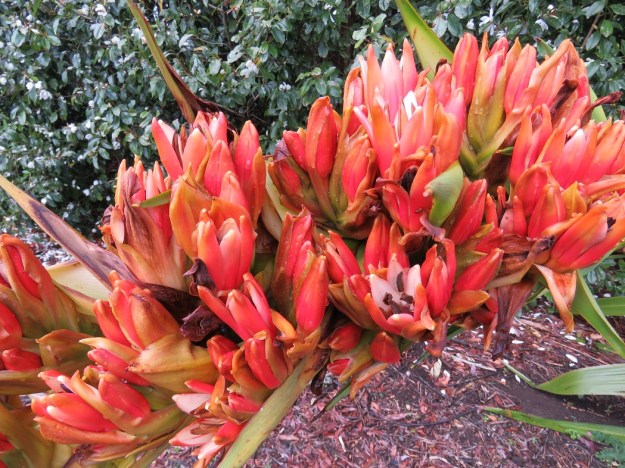
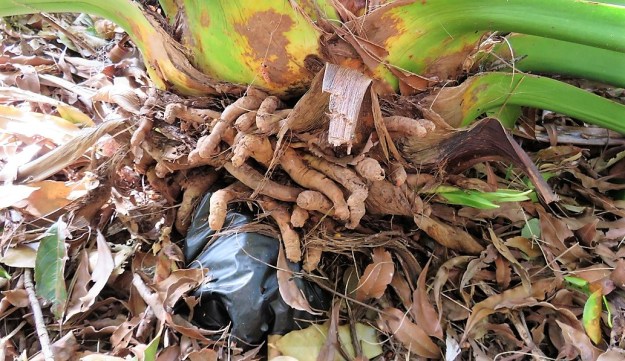 I mentioned it as a nursery relic cast aside. And indeed, I found confirmation of that this week as I was clearing around the plant. Behold, the original black planter bag, still around some of the root system. Some plants are tough and determined. It was not going to stay constricted by a pathetic little PB as we call these nursery bags.
I mentioned it as a nursery relic cast aside. And indeed, I found confirmation of that this week as I was clearing around the plant. Behold, the original black planter bag, still around some of the root system. Some plants are tough and determined. It was not going to stay constricted by a pathetic little PB as we call these nursery bags.
